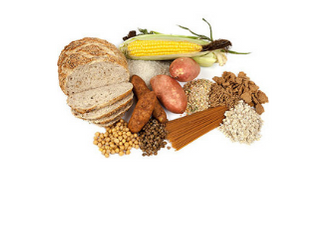Carbohydrates are one of the main sources of energy for the body and the preferred source of energy for the brain. There are three types of carbohydrates: sugars, starches and fiber.
Grains are just one of the main sources of starches.
Examples of Starches
All grains are starchy, including rice, oats, quinoa, bulgur, wheat, rye, barley, amaranth, millet, sorghum, triticale, wild rice and cornmeal.
Refined grains remove the bran and germ to increase their shelf life. Hence, refined grains are used to make baked goods, including bread, crackers, pasta and tortillas.
Most Nutritious Types
Whole grains foods are the most nutritious options for starchy grains. Whole grains contain more fiber and more vitamins than refined grains and may help lower your risk for obesity, diabetes, digestive issues, high cholesterol and heart disease.
Food Labels
Look for foods that contain 100 percent whole grains, or that say “whole grain” at the beginning of the ingredients list. ‘Enriched’, listed first means the produce is not whole grain. Don’t rely on the packaging as this may mislead you with marketing hype of a health claim just to make a sell.
Because the bread is ‘brown‘ or state ‘multi-grain‘ on the packaging does not automatically mean its a ‘whole grain‘!
Recommended Intake
Specific recommendations are determined based on caloric needs, health status, and goals. Likewise, its NOT recommended to completely cut starchy grain out of eating pattern (regardless of refined or whole)


